EXCLUSIVE: Border Patrol dumps buses full of MIGRANTS at overwhelmed San Diego center as California city continues to struggle with 1,200 arrivals every DAY
U.S. Border Patrol agents continue to dump migrants — including many who entered the country illegally — at a transit center in San Diego, overwhelming the city that already sees 1,200 people arriving a day.
New photos show the shocking moment buses carrying migrants from Central America, the Middle East and Africa arrive in the city centre.
There they meet social workers who help them book flights and bus tickets to other parts of the country. San Diego shelters have struggled with the influx of migrants under Joe Biden’s lax border policies.
San Diego has seen more than 1,000 migrants arrive per day, many coming to the Iris Ave Transit Center in Otay Mesa West. The center welcomes 800 to 1,200 migrants every day.
The centre, located a short drive from the border, offers haircuts on arrival, laundry facilities and the option to collect clean clothes and personal care items.
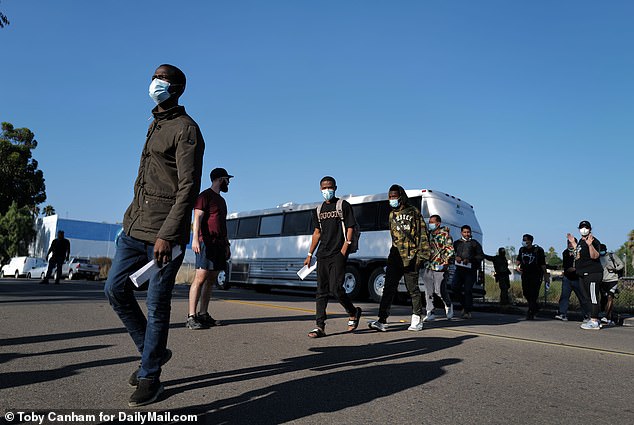
U.S. Customs and Border Protection has continued to dump dozens of migrants at San Diego transit centers as shelters buckle under demand
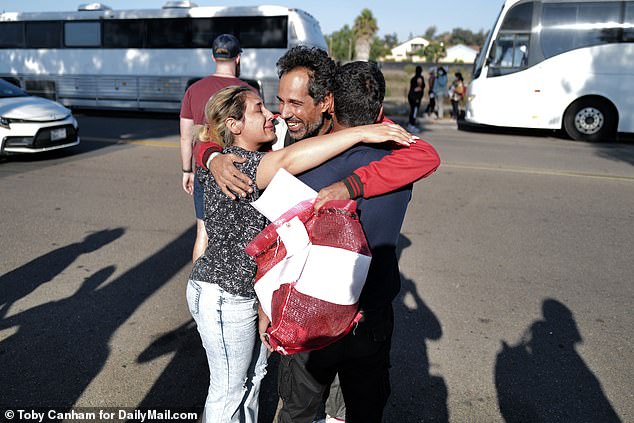
The influx of people has been too great for the Californian city, which typically has capacity for about 950 arrivals needing a bed for the night
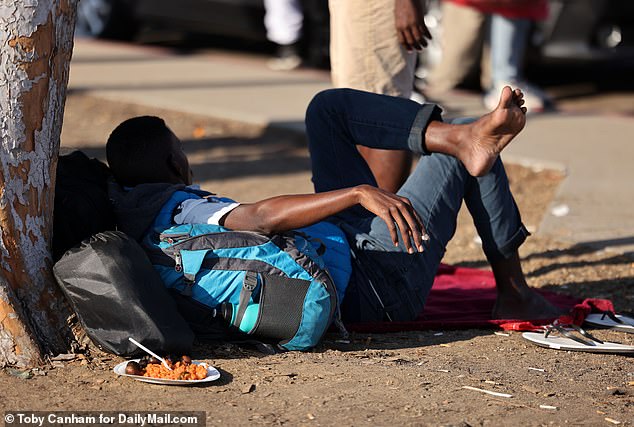
San Diego County supervisors recently agreed to a $3 million funding agreement for these services over the next three months
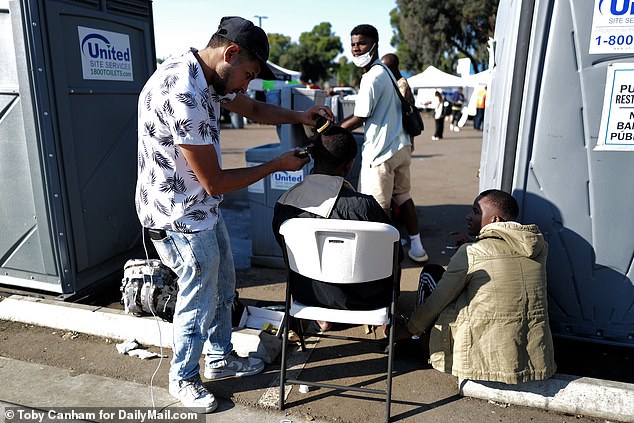
Newcomers who have often completed a grueling journey are offered snacks and water at the centers
Asylum seekers have come from all over the world, including Sudan, Chad, Senegal, China, India, Pakistan, Afghanistan, Central and South America and the Middle East.
Once they arrive they are greeted by several NGOs distributing food and water, clothing, sanitary products and information.
Arrivals will also have the opportunity to charge their phones, obtain SIM cards and use the internet to contact family back home.
The cost to perform the services is estimated at approximately $1 million per month. San Diego County supervisors recently agreed to a funding package for the next three months.
With asylum seekers pouring in from more than 100 countries, translation services are also offered.
Like 95 percent of all immigrants, those who arrive in San Diego do not plan to stay long term.
At the Iris Ave transit center, a booth staffed by South Bay Community Services offers asylum seekers assistance with booking flights. Many would like to travel further to New York, Chicago or Colorado and receive free flights or bus tickets paid for by the charities.
Shuttle buses run hourly to take migrants to San Diego airport and Greyhound stations.
Normally, San Diego has capacity for about 950 recently arrived migrants who need a bed for a night or two, according to the Wall Street Journal.
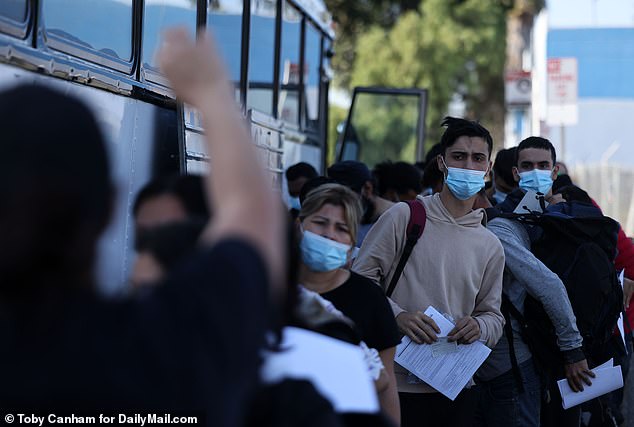
The Iris Ave Transit center in Otay Mesa West, where these migrants were pictured, has seen up to 1,200 new arrivals each day
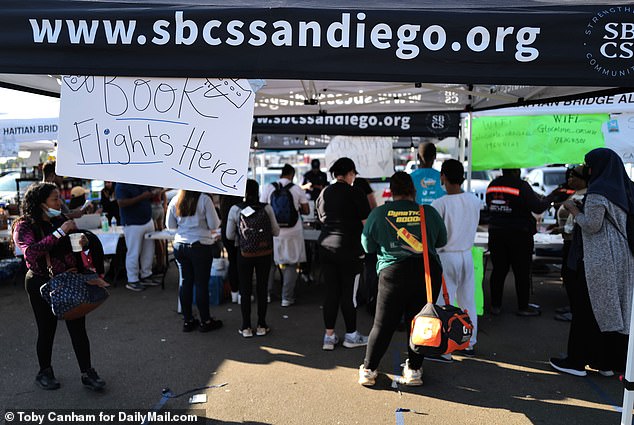
Social workers help newcomers book flights and bus tickets for onward travel. Many will move to other parts of the country as the southern border has been crushed by the influx of migrants
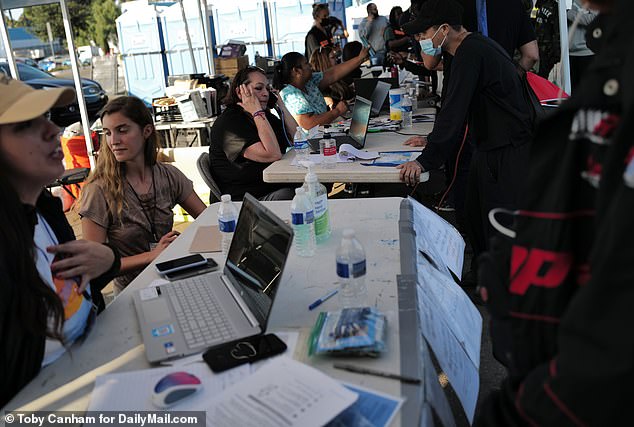
NGO workers check in migrants and assist them with information and translation services
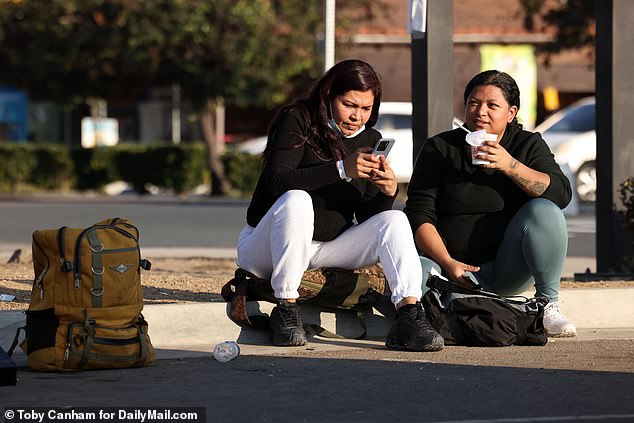
Arrivals will also have the opportunity to charge their phones, obtain SIM cards and use the internet to contact family back home.
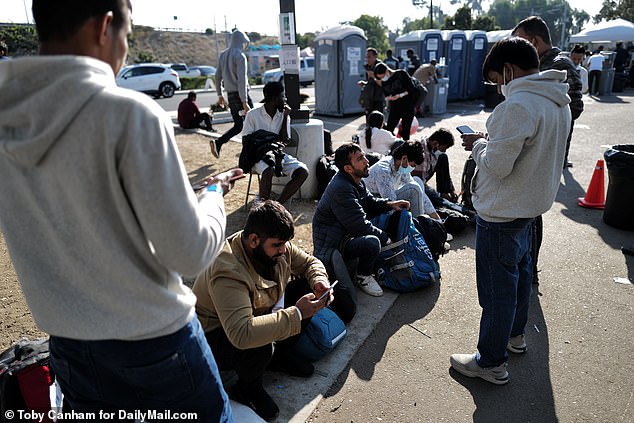
The cost to perform the services is estimated at approximately $1 million per month
Provincial government officials have called the current situation “an unprecedented humanitarian crisis,” as illegal border crossings between Mexico and San Diego rose to the highest level in two decades between January and August of this year.
There were 200,000 illegal crossings in the nine-month period, despite a wave of new asylum restrictions introduced in May.
Migrant aid groups have blamed the spike in illegal crossings on the huge numbers of people arriving in San Diego.
They also pointed to reduced government funding and the decision to send other migrants from Texas and Arizona to the California city for processing.
The publications come as several US cities continue to grapple with their own migrant crises.
There have been similar migrant releases in Arizona, where CBP agents have discovered up to 2,000 per day.
Democratic-led cities like New York and Chicago have particularly struggled, with Texas Gov. Greg Abbott sending more than 50,000 migrants north in an effort to get liberal cities to play their part in the border crisis.
In California, the Salvation Army has used emergency government funding to pay for flights to New York and other destinations.
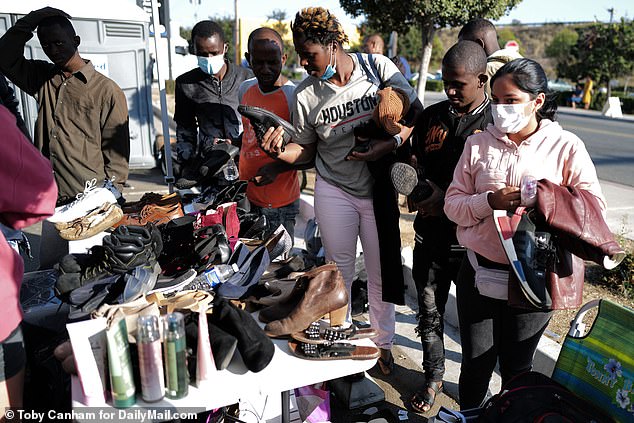
Migrants at the Iris Ave transit center are offered clothing and personal care items to take with them
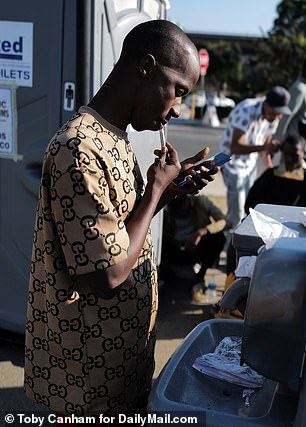
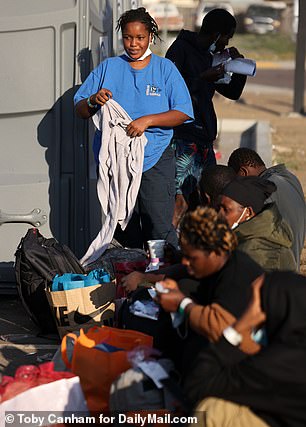
San Diego’s migrant crisis is partly due to a rise in illegal crossings this year, which reached the highest level in two decades.
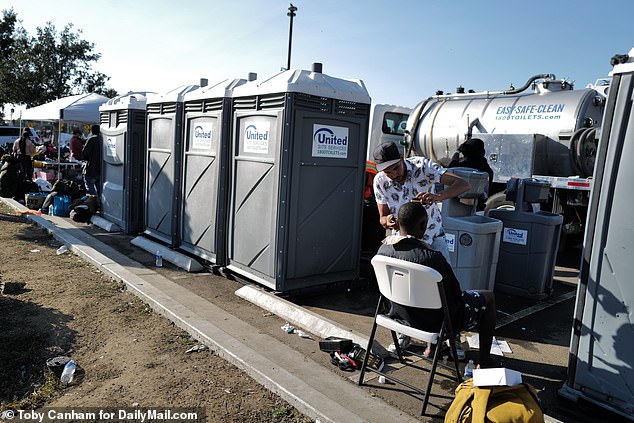
Provincial government officials have called the current situation “an unprecedented humanitarian crisis,” as illegal border crossings between Mexico and San Diego rose to the highest level in two decades between January and August of this year.
In August, New York Mayor Eric Adams called for more funding when he revealed that the city had taken in more than 100,000 asylum seekers since last spring.
He said, “While our compassion is limitless, our resources are not,” adding, “We need our federal and state partners to ensure their efforts match the magnitude of this moment.”
The Department of Homeland Security said last month that it has provided $790 million for migrant shelters this year and asked Congress for another $600 million.
In an effort to relieve some of the pressure, the Biden administration announced it would make a U-turn in its immigration policies and resume deportations of Venezuelans.
It comes after the president wanted to restart construction of the controversial border wall.
